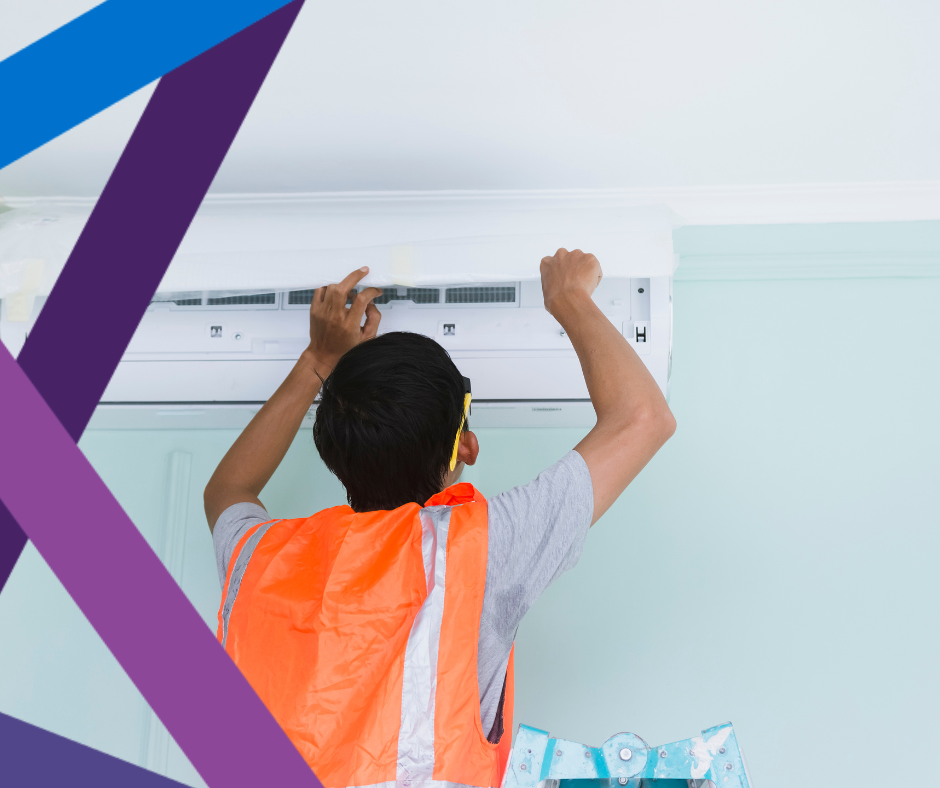Heating, Ventilation and Air Conditioning and the Changing Tide of Covid-19

Introducing our first guest blog by Kash Bhatti from commercial property managers, Cowiesburn. Kash discusses the importance of heating and ventilation systems in your building, especially to prevent the spread of COVID-19.
Who would have thought that almost 2 years later we would still be discussing COVID-19, let alone writing articles with a view for you to make informed decisions about workplace safety?
The COVID-19 pandemic has taken us all by storm and for now the tell-tale signs are that it’s not going away anytime soon. So where does this leave the office worker who is fed-up working from home and wishes to balance working from home and the office, in a safe manner?
There has been an abundance of articles published on how to deal with office ventilation systems during the COVID-19 pandemic, which can be overwhelming in content and jargon for the not so savvy mechanically minded person.
Since the pandemic began, the law has not changed on how heating, ventilation and air conditioning (HVAC) systems should be maintained. What has changed is the guidance given – the guidance now assists employers to identify poorly ventilated areas and make informed decisions on what actions require to be undertaken to improve the ventilation. This could be as simple as to ensure openable windows are kept open to allow good ventilation.
Therefore, to help you decide which actions to take, the first steps is the need to carry out an appropriate COVID-19 risk assessment, just as you would for other health and safety related hazards. This risk assessment must be completed in consultation with your staff.
In naturally ventilated space, windows and vents are often the mechanism for providing outside air. In colder months, it may be that high-level windows are opened and not so widely, this will facilitate the mixing of outside air with air within the office space, ensuring that incoming air is warmed before it reaches the occupied areas.
Where there is no natural ventilation, then offices are reliant on mechanical ventilation or supply / extract fans. These systems should be subject to regular maintenance, such as change of filters, checking of fans and cleaning of any ductwork or end grills.
Ducted air conditioning systems will typically use a mechanical ventilation system. The outside air is first either heated or cooled before moving along the ductwork to the office space. Other systems that are commonly known as air conditioning systems only heat or cool the air in the office space and recirculate it, but not part of a wider ventilation system. It is important to understand that these systems are not delivering outside air, and therefore not diluting any airborne bacteria. Therefore, as part of any risk assessment, it may be prudent to only use these areas for short periods at a time.
Ducted or un-ducted air conditioning systems should be subject to regular maintenance, such as checking of the fan coil units, filters and cleaning of end grills.
In summary, to improve ventilation within indoor space the key actions to consider are;
- Understand the existing ventilation system
- Understand where there may be poorly ventilated areas
- Increase the natural ventilation rates as much as possible
- Recirculation of air is only acceptable when it is combined with a supply of outside air
We hope you have found this article useful and if you require to conduct an assessment of your HVAC systems, please contact Armour Risk Consulting at enquiries@armour-risk.co.uk or on 0131 516 1767.
Our content is correct at the date of publishing, but should not be taken as legal advice, and our articles don’t replace Risk Assessments. Armour will not be held accountable for any legal actions the reader may take.
